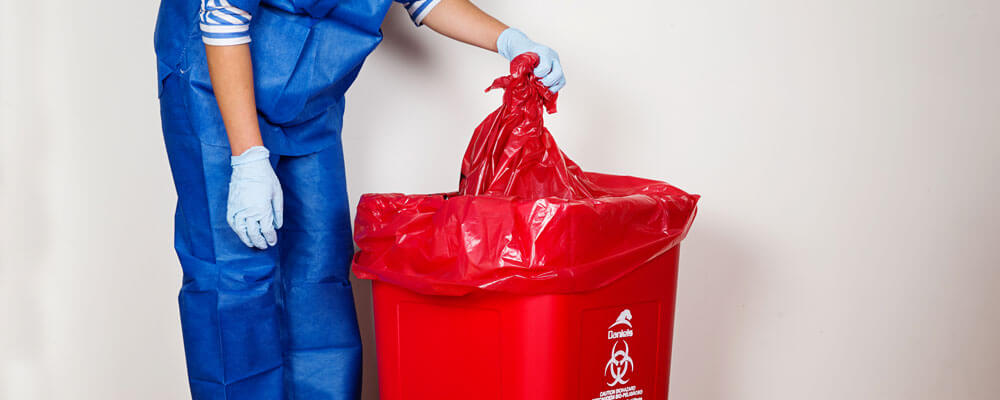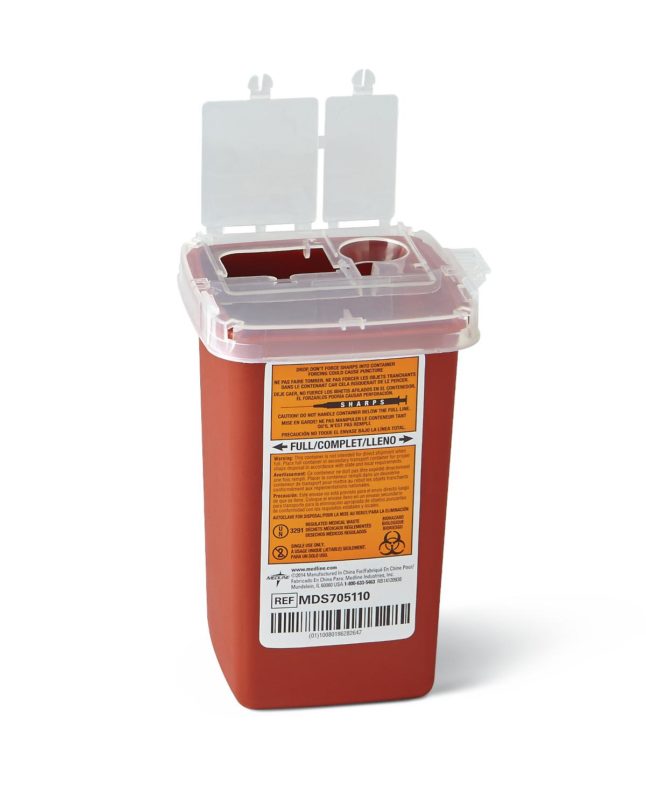Medical Waste Removal Quality: Elevating Safety And Security Requirements in Your Center
Medical Waste Removal Quality: Elevating Safety And Security Requirements in Your Center
Blog Article
Minimize Costs and Optimize Safety And Security: Effective Medical Garbage Disposal Approaches
Reliable clinical waste disposal techniques are important for health care facilities to minimize costs and maximize safety and security. With the growing issue for environmental sustainability and the raising variety of guidelines surrounding waste management, it is essential for healthcare companies to embrace compliant and efficient methods. By executing proper partition and classification, efficient product packaging and labeling, risk-free transportation and handling, reliable treatment and disposal methods, and conformity with regulatory standards, health care facilities can make certain the risk-free and responsible monitoring of medical waste. In this conversation, we will explore each of these methods carefully, giving insights and sensible suggestions for healthcare experts to optimize their waste disposal procedures.

Correct Segregation and Categorization
Appropriate partition and classification are critical components of effective medical waste disposal methods, making certain the safety and security of healthcare workers, the public, and the environment - medical waste removal services. medical waste disposal services with WasteX. By dividing various kinds of clinical waste at the factor of generation, health care facilities can decrease the danger of cross-contamination and possible injury to ecosystems and people
One of the vital variables in appropriate partition is the recognition and classification of clinical waste. This involves classifying waste into various groups, such as transmittable, harmful, radioactive, or pharmaceutical waste. Each group requires details handling, storage, and disposal approaches to avoid any negative effects on human health and wellness and the environment.
Moreover, proper partition also includes making use of color-coded tags and containers to clearly identify and set apart the different kinds of clinical waste. This assists medical care workers and waste monitoring personnel to quickly identify and deal with the waste suitably. Red containers may be made use of for infectious waste, while yellow containers may be assigned for unsafe waste.
In addition to segregation, appropriate classification also involves the right product packaging and control of medical waste. This guarantees that waste is safely saved and transported without presenting any kind of threats to people or the environment. Using leak-proof and puncture-resistant containers, in addition to effectively securing and classifying them, helps to avoid any type of unexpected direct exposure or launch of harmful materials.
Effective Product Packaging and Classifying
Reliable product packaging and labeling play a critical role in ensuring the effective and safe disposal of clinical waste. Correct product packaging is vital to protect against leak, damage, or splilling throughout transportation and handling. It helps to minimize the risk of contamination and protects medical care employees, waste administration workers, and the atmosphere from potential hazards.
Clinical waste must be packaged in strong and leak-proof containers that are immune to pierce and breakage. These containers should be effectively secured to stop any leak. In addition, the packaging should have the ability to stand up to the conditions of transportation, consisting of temperature variants and harsh handling.
Labeling is just as crucial as it offers crucial details regarding the contents of the waste and any kind of prospective threats connected with it. The labels need to include the name of the medical care facility, the kind of waste, and any type of special handling directions. Clear and standardized labeling guarantees that waste monitoring workers can conveniently determine and take care of the waste properly.
Reliable packaging and labeling additionally aid in the correct segregation and classification of clinical waste. Clear labeling enables for very easy identification of various waste streams, such as transmittable waste, sharps, or pharmaceutical waste. This assists in simplifying the disposal process and making certain that the waste is treated or disposed of in conformity with regulative standards.
Safe Transportation and Handling
Making certain the safe transport and handling of clinical waste is of utmost significance in order to stop any prospective wellness and ecological risks. Medical waste, such as sharps, infected products, and pharmaceutical waste, must be appropriately packaged and taken care of to minimize the danger of direct exposure to unsafe substances and microorganisms.
Moving medical waste requires compliance with stringent guidelines and standards established by local authorities and environmental agencies. These guidelines intend to shield the health and safety of workers associated with waste administration and avoid the launch of harmful products right into the atmosphere.
To guarantee secure transport, medical waste should be positioned in puncture-resistant and leak-proof containers that are effectively secured and labeled. In addition, it is vital to utilize specialized lorries geared up with appropriate safety and security functions to transport clinical waste. medical waste disposal services with WasteX.
Handling medical waste additionally requires proper training and adherence to security methods. Personnel associated with the handling of clinical waste need to wear suitable individual safety tools (PPE) such as gloves, masks, and gowns to lessen the threat of direct exposure. They should also comply with stringent health techniques to stop the spread of infections and ensure the safe disposal of waste.
Effective Treatment and Disposal Techniques
Carrying out proper therapy and disposal approaches is critical in managing medical waste effectively and minimizing potential health and my response environmental risks. Medical waste, that includes sharps, transmittable materials, chemicals, and drugs, can pose significant dangers otherwise handled and disposed of properly. There are several therapy and disposal browse this site approaches readily available that stick to regulative guidelines and promote safe techniques.
One common technique is incineration, which includes shedding the waste at high temperature levels. Incineration works in destroying pathogens and decreasing the volume of waste, however it can release dangerous toxins right into the air otherwise effectively regulated. It is essential to use contemporary incinerators geared up with emission control technologies.
Another approach is autoclaving, which makes use of vapor and stress to sanitize the waste. Autoclaving is efficient in killing pathogens and lowering the quantity of waste, however it needs careful monitoring and upkeep to make sure appropriate functioning. The sterilized waste can after that be safely dealt with in a landfill.
Chemical therapy is one more choice, which involves making use of disinfectants or other chemicals to counteract microorganisms. This method is generally utilized for liquid waste, such as research laboratory specimens. It is crucial to use ideal chemicals and comply with correct procedures to guarantee effective treatment and prevent ecological contamination.

Conformity With Regulatory Guidelines
Sticking to governing standards is important in making certain appropriate conformity with medical waste disposal techniques. These guidelines are implemented to safeguard public wellness, prevent ecological contamination, and keep workplace security. Conformity with regulatory guidelines is critical for healthcare centers, as non-compliance can cause penalties, fines, and reputational damage.
Regulative standards detail the correct handling, storage space, transportation, and disposal of clinical waste. These guidelines likewise deal with the partition of various waste streams, such as sharps, transmittable waste, and pharmaceutical waste.
To maintain conformity, medical care centers must develop detailed waste monitoring programs that consist of personnel training, routine audits, and ongoing monitoring. It is vital to keep updated with any changes or updates to governing standards, as methods may develop over time. By staying educated and carrying out appropriate protocols, healthcare centers can minimize the capacity for regulatory offenses and secure the health and wellness of their team, people, and the surrounding community.
Verdict
Finally, executing effective clinical waste disposal strategies is critical for lessening costs and making the most of safety and security. Appropriate partition and categorization, efficient product packaging and labeling, safe transport and handling, and look at this website effective therapy and disposal methods are necessary steps to make sure compliance with regulative guidelines. medical waste removal near me. By adhering to these approaches, healthcare centers can protect the atmosphere and public wellness while also minimizing financial problems related to medical waste administration
By implementing appropriate partition and classification, efficient packaging and labeling, secure transportation and handling, effective therapy and disposal approaches, and compliance with regulatory guidelines, medical care centers can ensure the risk-free and liable management of medical waste. Red containers might be made use of for infectious waste, while yellow containers may be designated for harmful waste.
Clear and standard labeling ensures that waste management workers can quickly determine and take care of the waste suitably. (medical waste disposal services with WasteX)
Clear labeling enables for easy recognition of various waste streams, such as contagious waste, sharps, or pharmaceutical waste. These guidelines additionally resolve the segregation of different waste streams, such as sharps, transmittable waste, and pharmaceutical waste.
Report this page